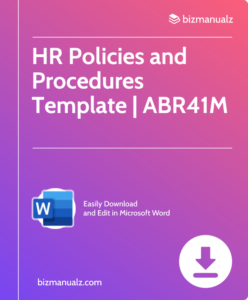How Do You Write Strengths In a Performance Review?

Performance reviews demand recognition of one’s strengths. It is a great way for people to display their unique skills and qualities, needed for personal development and career success. Writing about strengths requires accuracy, clarity, and insight. How do you write strengths in a performance review?
Preparing Strengths In a Performance Review
When discussing strengths in a performance review, it is important to concentrate on attributes or abilities that help the individual perform their job well.
This may be strong problem-solving abilities, leadership qualities, excellent organization skills, or creativity and innovation. By identifying and acknowledging these strengths, employers can motivate their employees while recognizing their accomplishments.
When putting words to paper, it is important to give clear examples of when these talents shone through. This will show the employer a complete picture of the employee’s capabilities and the influence they have had in their role.
For instance, John is a passionate team member known for his great communication skills. During a critical project launch, he managed internal conflicts easily by keeping communication lines open among everyone.
His skill to listen and communicate properly was invaluable to the project’s success. Acknowledging such accomplishments in his performance review motivated John and inspired him to keep on honing these essential abilities.
Understanding the purpose of writing strengths in a performance review
Performance reviews are essential for professional growth. Asking ‘what is the purpose?’ is key. This evaluation process recognizes competencies and positive attributes of an employee. It motivates them, builds confidence and encourages improvement.
In reviews, employers provide constructive feedback that strengthens positive behaviors or skills. This not only motivates, but also helps to understand what is valued and should be developed. This creates an environment that fosters growth.
Highlighting strengths in reviews also promotes a positive workplace culture. It shows appreciation, boosts morale and inspires others. It encourages collaboration and generates enthusiasm among team members.
An example is Sarah, a marketing manager at a renowned organization. During her annual review, her employer praised her leadership skills, problem-solving creativity and ability to meet deadlines without compromising quality. This recognition lifted Sarah’s spirits and motivated her to continue excelling.
Identifying and assessing strengths
Observe employee performance. Look for excellence and examine their skills. Ask colleagues for insights on their strengths. Analyze quantitative data and identify patterns that show outstanding performance. Evaluate if they are using their strengths effectively. Offer employees the chance to reflect on their own performance and suggest ways of developing them.
Go beyond job responsibilities and consider qualities that could enhance leadership or teamwork. Implement structured assessments and use objective tools to assess strengths. Create an atmosphere where employees can discuss their strengths.
Provide development opportunities to help them nurture their existing strengths and build new ones. Recognize and reward exceptional performance with incentives or public recognition.
By following these steps, organizations can optimize the process of identifying and assessing strengths for performance reviews. This helps employees to contribute to the success of the company.
Structuring and organizing the review
Organizing a performance review needs thoughtful focus on its content and design. To assess an employee’s abilities effectively, it’s crucial to construct a nice-structured review that emphasizes their accomplishments and talents.
Here’s a standard format for structuring performance reviews:
- Introduction – Briefly introduce the worker, their role, and the duration of the review.
- Key Strengths – Identify the primary strengths of the employee. Give particular examples of how they positively affected their work or team.
- Performance Metrics – Measure the employee’s performance against goals or targets using numerical data when possible.
- Achievements – Mention remarkable achievements or contributions made by the employee during the evaluation period.
- Growth Opportunities – Identify areas where the employee can further develop their expertise or knowledge for future success.
- Conclusion – Summarize the chief points from the review, including general feedback on the employee’s skills and performance.
It is also essential to provide special details about an employee’s talents that weren’t discussed in earlier sections. This could include certain cases where they demonstrated excellent leadership, problem-solving, or teamwork.
A story concerning organizing reviews involves a company that incorporated a complete performance evaluation protocol. By embracing this arranged method, bosses were able to give meaningful feedback to employees while making sure consistent evaluations across teams. This led to improved communication, amplified productivity, and improved morale among employees.
In conclusion, by following a structured format like the one stated above, firms can accurately emphasize an employee’s strengths in a performance review while furnishing constructive feedback that encourages growth and advancement.
Tips for effectively writing about strengths
When writing about strengths in a performance review, one must be careful and skillful. Here are some tips to effectively communicate an employee’s strengths:
- Mention particular successes to show the employee’s strengths.
- Give concrete examples of how the employee’s strengths have aided projects or tasks.
- Use descriptive words to paint a clear image of the employee’s strengths, concentrating on their unique talents and qualities.
- Recognize any growth or improvement in the employee’s strengths over time, emphasizing their passion for personal development.
- Express appreciation for the good effect the employee’s strengths have had on team dynamics and morale.
- Suggest prospects for the employee to further employ their strengths and keep on their professional growth.
Also, it is important to consider exclusive details when talking about an individual’s strengths. These can include special cases where the employee exhibited outstanding skills or gifts. By putting these details into the performance review, you not only give credibility but also customize the feedback.
When using these advice, it is vital to clarify why each one works. By spotlighting specific achievements and accomplishments, you provide evidence of the employee’s capabilities while motivating them to carry on doing well.
Utilizing descriptive language makes colorful imagery, making it easier for others to comprehend and relish the employee’s strengths. Acknowledging growth over time shows that you recognize and value their attempts, inspiring them to go on sharpening their skills.
Showing admiration for their impact on team dynamics fosters a favorable work environment and stimulates collaboration. Lastly, suggesting prospects for further growth displays your commitment to sustaining their professional development.
Presenting strengths in a professional manner
It’s key to showcase your strengths professionally. Remember to be self-aware and acknowledge areas of improvement. Avoid generic statements and buzzwords.
Highlight specific accomplishments that make a positive impact on the company or team. Identify valuable skills and how you’ve demonstrated them. Show evidence of growth and development. And illustrate how your strengths align with the organization’s values and goals.
Provide concrete examples that display the effect of your actions. This will help you present a well-rounded assessment of your capabilities.
Write Strengths In a Performance Review
The review process is not complete without a strong ending. Summarizing the strengths from the assessment is key to wrap it up. Throughout, many strengths were noted that have helped the individual’s success. These not only show their capabilities, but also give ideas for improvement.
Leadership, problem-solving, teamwork and adaptability are all qualities that should be highlighted. Giving examples and accomplishments reinforces the impact made in the role. When discussing strengths, avoid repeating points. Focus on things not already discussed. This gives an overview of strengths without sounding samey.
Pro Tip: Be sure to strike a balance between praising successes and giving constructive feedback for growth.
Frequently Asked Questions
 FAQ 1:
FAQ 1:
Q: How do I identify my strengths for a performance review?
A: To identify your strengths for a performance review, reflect on your accomplishments, feedback received, and tasks where you excel. Consider your abilities, skills, and qualities that contribute positively to your work performance.
FAQ 2:
Q: Should I focus only on work-related strengths in a performance review?
A: While it’s essential to highlight work-related strengths in a performance review, you can also include personal qualities that positively impact your work. This can include teamwork, problem-solving, communication, and adaptability skills.
FAQ 3:
Q: How should I present my strengths in a performance review?
A: Present your strengths in a performance review by providing specific examples of how you have used them to achieve success in your role. Use measurable results or feedback to showcase how your strengths have contributed to your team and organization.
FAQ 4:
Q: Can I mention the same strengths from previous performance reviews?
A: Yes, you can mention the same strengths from previous performance reviews if they are still relevant and applicable. However, try to include new examples or experiences to showcase your growth and continued utilization of those strengths.
FAQ 5:
Q: Should I include areas of improvement in addition to my strengths?
A: While it’s not mandatory, including areas of improvement along with your strengths demonstrates self-awareness and a willingness to grow. It also allows your reviewer to provide constructive feedback and support your development.
FAQ 6:
Q: How can I ensure my strengths are perceived positively in a performance review?
A: To ensure your strengths are perceived positively, focus on demonstrating how they contribute to your overall performance, team dynamics, and organizational goals. Discuss how you leverage your strengths for the benefit of the team and provide evidence of successful outcomes.

















Leave a Reply